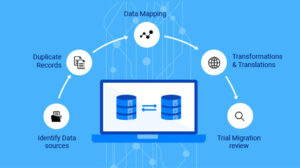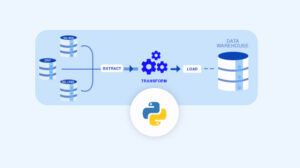Market research is the process of gathering, analyzing, and interpreting information about a market, its customers, competitors, and industry trends. The primary purpose of market research is to understand the target audience’s needs, preferences, and behaviors to make informed decisions related to product development, marketing strategies, pricing, and other business aspects.
Market research can be conducted using various methods, including:
- Primary research: Involves collecting new data directly from the target audience through methods such as surveys, interviews, focus groups, and observations. This type of research is tailored to specific business needs and provides first-hand insights.
- Secondary research: Involves analyzing existing data and information from sources such as industry reports, market studies, government publications, and competitor analyses. This type of research is usually more cost-effective and time-efficient but may not be as specific or up-to-date as primary research.
Market research can be further divided into two categories:
- Quantitative research: Focuses on collecting and analyzing numerical data to identify trends, patterns, and relationships. Common techniques include surveys, statistical analysis, and data modeling.
- Qualitative research: Aims to explore and understand the underlying reasons, motivations, and opinions of the target audience. Common methods include interviews, focus groups, and observational studies.
Businesses can gain valuable insights into customer needs, identify market opportunities, evaluate the competition, and make data-driven decisions to improve their products, services, and overall marketing strategies by conducting market research.
Application of Market Research
Market research has numerous applications across various industries and business functions. Some key applications of market research include:
- Product Development: Market research helps businesses identify customer needs, preferences, and pain points, enabling them to develop new products or improve existing ones to better meet customer expectations.
- Pricing Strategy: By analyzing competitor prices, customer price sensitivity, and market trends, market research can help businesses establish pricing strategies that maximize revenue and market share.
- Market Segmentation: Market research enables businesses to identify and categorize different customer segments based on demographic, geographic, psychographic, and behavioral factors. This allows for targeted marketing efforts and tailored product offerings for each segment.
- Competitor Analysis: Through market research, businesses can gain insights into their competitors’ strengths, weaknesses, opportunities, and threats (SWOT analysis). This information helps businesses identify market gaps, develop competitive advantages, and make informed strategic decisions.
- Brand Positioning: Market research allows businesses to understand customer perceptions of their brand and its offerings, enabling them to develop a unique value proposition and positioning strategy that resonates with their target audience.
- Advertising and Promotion: By analyzing customer preferences, market research can inform the development of effective advertising and promotional campaigns, including the choice of advertising channels, messaging, and creative elements.
- Customer Satisfaction: Market research helps businesses gauge customer satisfaction levels, identify areas for improvement, and implement changes that enhance customer experience and brand loyalty.
- Market Entry: When considering expansion into new markets or launching new products, market research can provide valuable insights into market size, growth potential, customer preferences, and potential barriers to entry, helping businesses make informed decisions.
- Sales Forecasting: Market research can inform sales forecasts by analyzing market trends, customer preferences, and competitive landscape, enabling businesses to plan for future growth and resource allocation effectively.
- Distribution Channel Analysis: By understanding customer preferences, market trends, and competitor strategies, market research can inform the selection and optimization of distribution channels, ensuring products reach customers efficiently and cost-effectively.
Sample Market Research Framework
Depending on the objective, the research areas, objectives and methods will but as a starting point let’s look at a sample market research framework for an eCommerce business.
| Research Area | Objective |
| Industry Analysis | Understand the overall eCommerce industry trends |
| Assess market size and growth potential | |
| Identify key industry players and competitors | |
| Understand regulatory environment and potential barriers | |
| Target Market | Identify target customer segments |
| Understand customer demographics, preferences, and behaviors | |
| Estimate market size and growth potential for each segment | |
| Product Offerings | Determine product categories and types to be offered |
| Identify customer needs and preferences | |
| Assess pricing strategies and product positioning | |
| Competitor Analysis | Analyze competitors’ product offerings and pricing strategies |
| Assess competitors’ marketing strategies and channels | |
| Identify competitor strengths and weaknesses | |
| Marketing Strategy | Develop a customer acquisition strategy |
| Identify the most effective marketing channels | |
| Determine messaging and creative elements | |
| Customer Satisfaction | Measure customer satisfaction levels |
| Identify areas for improvement in customer experience | |
| Assess the impact of changes to product offerings or website design |
Analysis Techniques in Market Research
Various analysis techniques are used in market research to derive insights from the collected data. Some of the most common techniques include:
- Descriptive analysis: Descriptive analysis involves summarizing and describing the main features of the data. This can include calculating measures of central tendency (mean, median, mode), measures of dispersion (range, variance, standard deviation), and frequency distributions.e.g. – A supermarket chain wants to understand the average amount spent by customers during a week. They collect data on customer purchases and calculate the mean, median, and mode, as well as the range and standard deviation, to get a comprehensive understanding of their customers’ spending patterns.
- Cross-tabulation: Cross-tabulation, also known as contingency tables, is a technique used to explore the relationship between two or more categorical variables. By displaying the frequency distribution of these variables in a table, researchers can identify patterns, trends, and potential associations.e.g. – A clothing brand wants to analyze the relationship between customers’ age groups and their preference for different product categories. By creating a cross-tabulation of age groups and product categories, they can identify which products are more popular among specific age groups.
- Hypothesis testing: Hypothesis testing is a statistical method used to test the validity of a claim or assumption about a population parameter. This involves setting up a null hypothesis (e.g., no difference between groups) and an alternative hypothesis (e.g., a significant difference between groups), and then using statistical tests, such as t-tests, chi-square tests, or ANOVA, to determine if the null hypothesis can be rejected or not.e.g. – An eCommerce company wants to determine if a new website layout increases conversion rates. They set up an A/B test, with the null hypothesis being that there’s no difference in conversion rates between the old and new layouts. They then use a t-test to compare the two groups and determine if there’s a statistically significant difference.
- Correlation analysis: Correlation analysis measures the strength and direction of the relationship between two continuous variables. The most common method is calculating the Pearson correlation coefficient, which ranges from -1 (perfect negative correlation) to +1 (perfect positive correlation), with 0 indicating no correlation.e.g. – A car manufacturer wants to understand if there’s a relationship between a car’s fuel efficiency and its price. They calculate the Pearson correlation coefficient between fuel efficiency and price, which reveals a negative correlation, indicating that as fuel efficiency increases, the price tends to decrease.
- Regression analysis: Regression analysis is a statistical technique used to model the relationship between a dependent variable and one or more independent variables. It helps in predicting future values, understanding causal relationships, and identifying the impact of different factors on the outcome of interest.e.g. – A real estate agency wants to predict house prices based on factors such as square footage, the number of bedrooms, and the age of the house. They perform a multiple regression analysis and develop a model that allows them to estimate house prices based on these factors.
- Factor analysis: Factor analysis is a data reduction technique used to identify underlying dimensions or factors that explain the variance in a set of observed variables. This can help simplify complex datasets and uncover hidden patterns or relationships.e.g. – A streaming service wants to understand the underlying factors that contribute to users’ preferences for different movies and shows. They conduct a factor analysis on user ratings and discover that factors such as genre, production quality, and storyline complexity drive user preferences.
- Cluster analysis: Cluster analysis is an unsupervised learning technique used to group similar data points based on their characteristics. This can help identify target market segments, customer profiles, or product groupings.e.g. – A bank wants to create targeted marketing campaigns for their credit card products. They use cluster analysis to segment their customer base into groups based on demographics, spending habits, and credit history, allowing them to tailor their marketing messages for each segment.
Sentiment analysis: Sentiment analysis, also known as opinion mining, is a technique used to analyze the sentiment or emotions expressed in textual data, such as customer reviews or social media comments. This can help gauge customer satisfaction, brand perception, and overall sentiment towards a product or service.
e.g. – A hotel chain wants to monitor customer satisfaction based on online reviews. They perform sentiment analysis on reviews from various platforms, which helps them identify positive and negative feedback, trends in customer satisfaction, and areas for improvement. - Conjoint analysis: Conjoint analysis is a technique used to understand customer preferences and the trade-offs they make when evaluating multiple product attributes. This can help inform product development, pricing strategies, and marketing communications.
e.g. – A smartphone manufacturer wants to understand which features are most important to their customers when choosing a new phone, such as battery life, camera quality, or storage capacity. They conduct a conjoint analysis to determine the relative importance of these features and use the results to inform their product development and marketing strategies.
The Role of Data in Market Research
Market research has become increasingly data-driven, with businesses leveraging vast amounts of information to gain insights into customer behaviors, preferences, and trends. However, the shift to digital market research also comes with several data challenges, including:
- Data Volume: The sheer volume of data generated by digital channels, such as social media, mobile apps, and web analytics, can be overwhelming for researchers. Managing, storing, and processing large datasets require significant computing resources, as well as sophisticated tools and techniques.
- Data Variety: Digital market research involves collecting data from a wide range of sources, including structured data (e.g., surveys, sales data) and unstructured data (e.g., social media posts, customer reviews). This variety of data formats and types can complicate data integration and analysis, requiring researchers to employ various tools and techniques to process and make sense of the data.
- Data Quality: Ensuring data accuracy, completeness, and consistency is a major challenge in digital market research. Data collected from different sources may be subject to biases, errors, or inconsistencies, which can impact the reliability of the insights derived from the data. Researchers need to employ data cleaning and validation techniques to ensure that their findings are based on high-quality data.
- Data Privacy and Security: The collection, storage, and analysis of digital data raise concerns about data privacy and security. Researchers need to comply with data protection regulations, such as GDPR or CCPA, and implement robust data security measures to protect sensitive customer information and maintain trust with their target audience.
- Real-Time Data Analysis: The fast-paced nature of digital channels means that market trends and customer preferences can change rapidly. To stay competitive, businesses need to analyze data in real-time or near-real-time, which can be challenging given the data’s volume, variety, and complexity.
- Data Integration: Combining data from multiple sources to create a holistic view of the market and customers is a significant challenge in digital market research. Data integration tools and techniques are required to consolidate and harmonize data from various sources, ensuring that insights are based on a comprehensive and consistent data foundation.
- Analytical Skills Gap: The complexity of digital data and the need for advanced analytical techniques demand specialized skills and expertise in data science, statistics, and programming languages like R or Python. Many organizations struggle to find, attract, and retain talent with the necessary skills to effectively analyze and interpret digital data.
To overcome these challenges, businesses need to invest in advanced data management and analytical tools, develop or acquire specialized skills, and implement data governance practices that ensure data quality, privacy, and security. By addressing these data challenges, businesses can harness the power of digital market research to drive better decision-making and gain a competitive edge in the market.
Conclusion
Market research has evolved into a data-driven field, and partnering with a trusted data expert like Saras Analytics can be the key to unlocking your business’s full potential. With our expertise and insights, you can confidently act on your data to make informed decisions and stay ahead of the competition. Don’t miss out on the valuable insights that market research has to offer – contact Saras Analytics today and elevate your business to new heights!
- Market research aids firms in identifying customer demands. Businesses may create goods and services that better satisfy the requirements and expectations of their target market by gathering information about consumer demographics, purchasing patterns, and attitudes.
- Market research enables companies to assess their rivals, spot market gaps, and create strategies to set themselves apart. Identifying potential growth opportunities may involve evaluating the competitors' prices, marketing, and product offerings.
- Conclusions that may help firms make important decisions regarding product development, marketing plans, and company planning is what market research does. Businesses may lower the danger of expensive errors and raise their chances of success by basing choices on facts and evidence.
- Primary research: Primary research gathers information directly from clients or prospective clients. Surveys, interviews, focus groups, and observation can all be used to accomplish this. Secondary research saves time and money, while primary research gives firms more specialized and focused information.
- Secondary research: Analysing data from sources like government statistics, industry studies, or competitor information is known as secondary research. Secondary research may not offer organizations the same amount of specific data as primary research, but it is frequently less expensive and takes less time.
- Qualitative research: Gathering non-numerical data, such as views, attitudes, and feelings, is a qualitative research component. Interviews, focus groups, or observations can be used for this. Through qualitative research, businesses may gain a deeper insight into client demands and preferences.
- Quantitative research: Research that uses numbers, such as statistics, surveys, or experiments, is known as quantitative research. This kind of study gives companies more specific and quantifiable data that can be utilized to inform choices.












